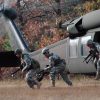calsfoundation@cals.org
William Atha Gay (1912–1944)
A native of Mississippi, William Atha Gay spent much of his youth in Lepanto (Poinsett County) and attended what is now Arkansas State University in Jonesboro (Craighead County). After graduating from the United States Military Academy at West Point, he served in the Philippines. He was captured in early 1942 during World War II and later lost his life when the ship on which he was being transported was sunk by American forces.
William Gay was born in Brooksville, Mississippi, on July 29, 1912, to Thomas Gay, who was a dry goods merchant, and Maddie Gay. He spent his early years in Mississippi and moved to Lepanto as a teenager. He attended Lepanto High School before moving with his family to Memphis, Tennessee, where he graduated. Returning to Arkansas, he enrolled at Arkansas State College in the midst of the Great Depression. He dropped out and tried to find regular work but was unsuccessful. He appears in the 1930 federal census with his parents and siblings in Poinsett County. His father died in 1930 and is buried in Jonesboro. Gay enlisted in the U.S. Army in the mid-1930s and received an appointment to West Point in 1934.
Graduating in 1938, Gay placed eighteenth out of 300 cadets in his class. He also married Eleanor Dark on September 5 of the same year. Receiving a commission as a second lieutenant in the Corps of Engineers, Gay took an assignment at Post McKinley in Manila, Philippines. Tasked with training troops in the Philippine army, Gay was at his post when Japanese forces attacked on December 8, 1941, at the same time the attack on Pearl Harbor occurred on the other side of the International Date Line. By the end of the month, Gay had received a promotion to major and was serving as an engineering officer to defend Luzon.
Gay served on the staff of Brigadier General Hugh Casey, the chief engineer in the Philippines, during the opening months of the battle. Working with several other officers on the staff, Gay regularly inspected the defensive lines, and after receiving word that some officers were to be evacuated to Australia, he and Casey inspected the entire line over three days. The report that Casey and his staff completed was passed to Lieutenant General Jonathan Wainwright after General Douglas MacArthur and his staff, including Casey, departed. Gay remained behind and surrendered with other forces at an unknown date in 1942. He escaped from Japanese forces at least twice during his captivity but was recaptured both times.
While he was held in various prison camps in the Philippines, Gay regularly wrote to his wife detailing the experience of the prisoners of war, but he was unable to have his letters delivered. In late 1944, the Japanese moved Gay and about 1,600 other prisoners to the ship Oryoku Maru to travel to the Japanese home islands to be used for slave labor. Planes from American aircraft carriers attacked the unmarked ship on December 14 and 15, causing it to sink. Several hundred of the American prisoners died in the attack or sinking, including Gay. His body was not recovered. Eleanor received the letters from a surviving prisoner after the end of the war.
A cenotaph for Gay is located in Oaklawn Cemetery in Jonesboro, near the graves of his parents. A second cenotaph is located in Alexander City, Alabama, near Eleanor’s grave. She married Gerard John Scarano in 1956 and died in 2009.
Hugh Casey recounted in his memoirs that Gay was one of the best officers in his command during the war. The letters written by Gay to his wife, along with other materials, are part of the Eleanor and William Atha Gay Papers held at the University of Arkansas (UA) in Fayetteville (Washington County).
For additional information:
Casey, Hugh. Engineer Memoirs: Major General Hugh J. Casey, U.S. Army. Washington DC: Corps of Engineers Office of History, 1993.
Eleanor and William Atha Gay Papers. Special Collections. University of Arkansas Libraries, Fayetteville, Arkansas. Finding aid online at https://uark.as.atlas-sys.com/repositories/2/resources/2771 (accessed April 29, 2025).
David Sesser
Southeastern Louisiana University
 Military
Military World War II through the Faubus Era, 1941 through 1967
World War II through the Faubus Era, 1941 through 1967



Comments
No comments on this entry yet.